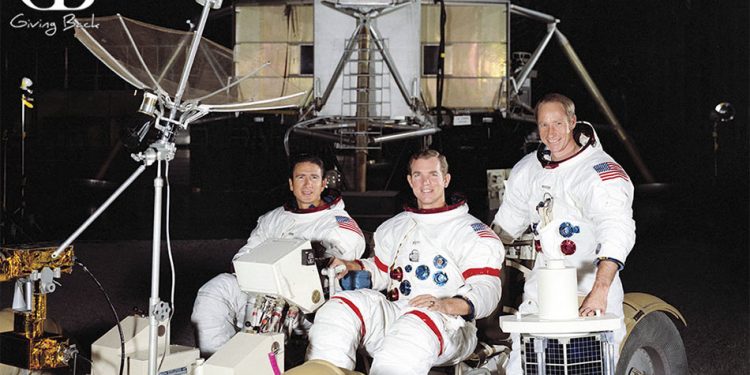Apollo 15 Fiftieth Anniversary

“The most complex and carefully planned scientific expedition in the history of exploration.”
Fifty years ago this year, Apollo 15 – which according to NASA was “the most complex and carefully planned scientific expedition in the history of exploration,” launched aboard a massive Saturn V rocket from pad LC39 at 9:36 a.m. local time from Kennedy Space Center in Florida. Their objective was an ambitious one, to explore the Hadley Apennine region of the Moon, the most scientifically significant site of the entire Apollo program.
After a three-day transit and one day in lunar orbit, Commander Dave Scott and Lunar Module Pilot Jim Irwin landed their Lunar Module “Falcon” near Hadley Rille at the base of the Apennine mountains to live and work on the Moon for three days, as Command Module Pilot Al Worden orbited the Moon in the Command Module “Endeavor,” operating a large suite of sophisticated scientific instruments. Scott and Irwin drove the first Lunar Roving Vehicle to explore three areas of unique geological features on the slopes of Hadley Delta mountain (9,000 feet) and the edge of Hadley Rille (1,000 feet deep, 1.5 miles across).
In its debut, the Lunar Rover, a battery powered electric car designed specifically for use on the Moon, allowed the astronauts to travel much greater distances – as many as 3.1 miles – away from the lunar lander than ever before. During their three EVAs and 18 hours outside the Lunar Module, Scott and Irwin observed for the first time stratigraphic layering in the sides of Hadley Rille, maneuvering the rover from the Lunar Module up the steep soft slopes (19 degrees) of Hadley Delta mountain.
In all, they collected 179 pounds of lunar rocks and soil, among the most significant of which were an anorthosite (15415), the first sample of the primordial crust of the Moon (age 4.5 billion years) often termed the “Genesis Rock,” and a surprising “friable green clod” (15425), containing the first water discovered on the Moon.
Scott and Irwin would later precisely rendezvous with Worden for two more days of science in lunar orbit. The transit back to Earth took three days, where they splashed down on August 7, 1971, in the North Pacific Ocean and were met and recovered by the extremely capable crew of the aircraft carrier the USS Okinawa.
Apollo 15 was the first of three “J” missions, which were the most scientifically advanced of the Apollo program, with each crew receiving years of training in geology and other fields that put them among the most skilled and well-prepared explorers in history.
The Apollo 15 Mission and Crew were recently celebrated at the San Diego Air and Space Museum in Balboa Park which houses artifacts from this, and many more space missions and is open to the public.





